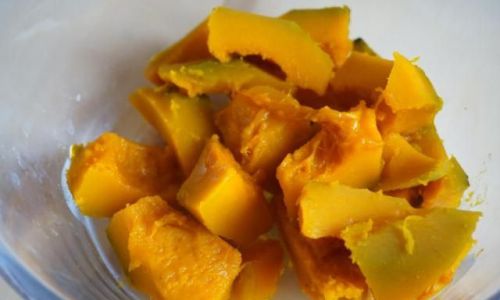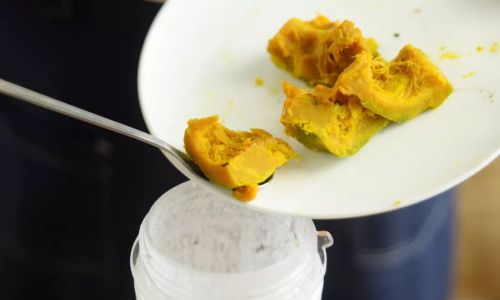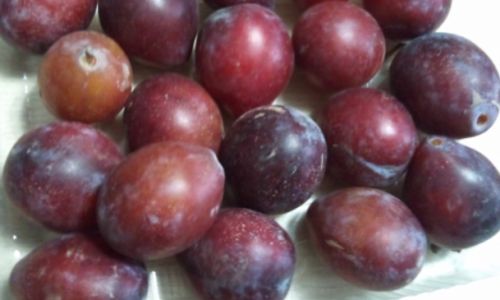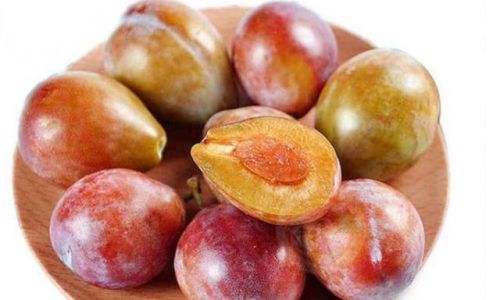Kabocha squash, often referred to as Beibei squash in Chinese markets, is a winter squash variety celebrated for its sweet, nutty flavor and dense, velvety texture. Native to Japan, this vibrant green or orange-skinned gourd has gained global popularity for its versatility in both sweet and savory dishes. However, one challenge that often intimidates home cooks is peeling its tough, waxy exterior. Unlike softer squashes like butternut or acorn, Kabocha’s skin is notoriously stubborn, requiring specific techniques to remove safely and efficiently. This article delves into the science behind Kabocha’s skin, explores multiple peeling methods, and provides actionable tips to streamline the process. Whether you’re a seasoned chef or a novice in the kitchen, mastering the art of peeling Kabocha squash will elevate your culinary repertoire.
Understanding Kabocha Squash: Why Is the Skin So Tough?
Before diving into peeling techniques, it’s essential to grasp why Kabocha’s skin poses a unique challenge. The squash’s exterior is composed of a thick layer of cork cells, which act as a natural defense against pests, diseases, and dehydration. This corky tissue, rich in suberin (a waxy substance), creates a waterproof barrier that preserves the flesh’s moisture and nutrients. While this adaptation ensures the squash’s longevity during storage, it also makes manual peeling laborious.
Additionally, Kabocha’s skin contains lignin, a complex polymer that provides structural rigidity. Lignin’s presence explains why even mature, fully ripened Kabocha squash retains its firmness—a trait that distinguishes it from softer winter squashes like delicata. Understanding these biological components helps explain why brute force alone is ineffective and why strategic methods are necessary.

Tools of the Trade: Essential Equipment for Peeling Kabocha
To peel Kabocha squash safely and effectively, you’ll need the right tools. Investing in quality kitchen equipment not only simplifies the process but also minimizes the risk of accidents. Here’s a list of must-have items:
-
Sharp Chef’s Knife: A sturdy, 8-inch chef’s knife with a razor-sharp edge is indispensable for cutting through the squash’s dense flesh. Dull blades increase effort and danger, as they require more force and can slip easily.
-
Serrated Vegetable Peeler: While traditional Y-shaped peelers struggle with Kabocha’s skin, a serrated peeler (designed for tough-skinned produce like butternut squash or pineapples) grips the waxy surface better, allowing for smoother strokes.
-
Paring Knife: A small, sharp paring knife is ideal for trimming stubborn patches of skin or navigating curved sections of the squash.
-
Cutting Board: Opt for a large, stable board with rubber grips to prevent slippage. Place a damp kitchen towel underneath for added stability.
-
Kitchen Shears (Optional): For smaller tasks like snipping off the stem or removing blemishes, kitchen shears can provide precision without risking knife slippage.
-
Gloves (Optional): If you’re concerned about grip or knife safety, textured food-safe gloves can enhance control while handling slippery squash.
Method 1: The Direct Peeling Approach
For those with steady hands and a sharp peeler, direct peeling is the fastest method. However, it requires patience and caution to avoid injury.
Step-by-Step Guide:
-
Stabilize the Squash: Place the Kabocha on a cutting board. Using your non-dominant hand, grip the squash firmly near the base. Avoid holding it by the stem end, as this reduces control.
-
Start Peeling: Hold the serrated peeler at a 45-degree angle against the skin. Apply gentle, even pressure as you drag the peeler toward you in long, smooth strokes. Work in sections, peeling from the top (stem end) to the bottom (blossom end).
-
Rotate and Repeat: After peeling a section, rotate the squash to expose untreated skin. Continue until all skin is removed.
-
Trim Remaining Patches: Use a paring knife to scrape off any stubborn areas, especially around the stem or grooves.
Pros: Quickest method if you have a sharp peeler and steady technique.
Cons: Physically demanding; may waste some flesh if peeling too aggressively.
Method 2: Softening via Roasting
Roasting Kabocha squash before peeling is a chef-approved technique that leverages heat to soften the skin. This method is ideal for recipes requiring roasted squash, as it combines peeling and cooking into one step.
Step-by-Step Guide:
-
Preheat the Oven: Set your oven to 400°F (200°C). Line a baking sheet with parchment paper.
-
Pierce the Skin: Using a fork or knife, prick the squash’s skin 5–6 times to allow steam to escape during roasting.
-
Roast Whole: Place the entire Kabocha on the baking sheet and roast for 20–30 minutes. The skin will darken and blister slightly.
-
Cool and Peel: Remove the squash from the oven and let it cool until safe to handle. The skin will now peel off easily by hand or with a paring knife.
Pros: Simplifies peeling; enhances the squash’s natural sweetness through caramelization.
Cons: Increases cooking time; not suitable for recipes requiring raw squash.
Method 3: Microwave Blanching
For a quicker softening method, microwaving the squash for a few minutes can loosen the skin without fully cooking the flesh.
Step-by-Step Guide:
-
Pierce and Microwave: Prick the squash’s skin several times with a fork. Place it on a microwave-safe plate and microwave on high for 3–5 minutes, depending on size.
-
Check for Softness: Carefully touch the skin—it should yield slightly under pressure. If still rigid, microwave in 1-minute increments.
-
Peel Immediately: Once cooled enough to handle, use a peeler or knife to remove the skin. The heat will have loosened the cork cells, making peeling effortless.
Pros: Faster than roasting; retains more raw texture.
Cons: May unevenly soften the squash; requires careful handling to avoid burns.
Method 4: Boiling or Steaming
Blanching Kabocha in boiling water or steam is another effective way to loosen the skin. This method is particularly useful if you plan to use the squash in purees or soups.
Step-by-Step Guide (Boiling):

-
Prepare an Ice Bath: Fill a large bowl with ice water.
-
Boil the Squash: Cut the squash into halves or quarters (see “Pre-Cutting Techniques” below). Boil in salted water for 5–7 minutes.
-
Shock in Ice Bath: Transfer the squash to the ice bath for 2–3 minutes to halt cooking.
-
Peel: The skin will now slip off easily with minimal effort.
Pros: Preserves vibrant color; ideal for purees.
Cons: Adds moisture to the flesh, which may not be desirable for roasting.
Pre-Cutting Techniques: Divide and Conquer
Kabocha squash’s round shape can make it unwieldy to handle. Cutting it into manageable pieces before peeling simplifies the process.
-
Halve the Squash: Using a sharp chef’s knife, carefully slice the squash in half lengthwise through the stem. Apply steady, even pressure to avoid slippage.
-
Scoop Out the Seeds: Use a spoon to scrape out the fibrous seeds and pulp from each half. Save the seeds for roasting if desired.
-
Quarter or Wedge: Cut each half into quarters or wedges. This creates flat surfaces, making peeling easier.
Safety First: Avoiding Common Peeling Pitfalls
Peeling Kabocha squash can be hazardous if not approached mindfully. Follow these safety guidelines:
-
Keep Your Knives Sharp: Dull blades require more force, increasing the likelihood of slips.
-
Use a Stable Cutting Surface: A slippery board or uneven countertop can lead to accidents.
-
Curl Your Fingers: When holding the squash, tuck your fingertips under to create a “claw” grip. This prevents knife slips from cutting your fingers.
-
Work Slowly: Rushing increases mistakes. Take breaks if your hands tire.
Storing Peeled Kabocha Squash
Peeled Kabocha squash can be stored for later use. To maximize freshness:
-
Refrigeration: Place peeled chunks in an airtight container and refrigerate for up to 5 days.
-
Freezing: Blanch the squash in boiling water for 2 minutes, then shock in ice water. Pat dry, transfer to freezer bags, and freeze for up to 6 months.
-
Pickling: For a unique twist, pickle peeled Kabocha in a rice vinegar, sugar, and soy sauce brine.
Creative Uses for Peeled Kabocha Squash
Once peeled, Kabocha’s versatility shines. Here are five recipes to inspire your culinary adventures:
-
Kabocha Squash Soup: Roast peeled chunks with onions, garlic, and ginger, then blend with coconut milk for a silky, aromatic soup.
-
Kabocha Gnocchi: Mash cooked squash with ricotta and flour, then shape into pillowy dumplings. Serve with brown butter and sage.
-
Stuffed Kabocha Boats: Hollow out a whole squash, stuff with quinoa, cranberries, and pecans, then bake until tender.
-
Kabocha Tempura: Slice peeled squash into thin wedges, dip in tempura batter, and fry until golden. Serve with a soy-ginger dipping sauce.
-
Kabocha Halwa: For a dessert twist, simmer grated squash with cardamom, ghee, and condensed milk until thick and caramelized.
Troubleshooting: Why Won’t My Peeler Work?
If your serrated peeler struggles with Kabocha’s skin, consider these fixes:
-
Check the Blade: Over time, peeler blades dull. Replace them or invest in a high-quality model.
-
Adjust the Angle: Peeling at too steep an angle can cause the blade to dig in. Maintain a shallow, consistent angle.
-
Soften the Skin: If all else fails, soften the squash via roasting or microwaving before peeling.
Conclusion: Embrace the Challenge
Peeling Kabocha squash may seem daunting at first, but with the right tools and techniques, it becomes a manageable—even meditative—kitchen task. Whether you prefer the direct approach, roasting, or blanching, each method offers unique advantages. Experiment to find your favorite, and don’t shy away from incorporating this nutritious, flavorful gourd into your meals. Remember, practice makes perfect, and every peeled Kabocha squash is a step toward culinary mastery. So grab your knife, steady your board, and let the transformation begin—your taste buds will thank you.






0 comments